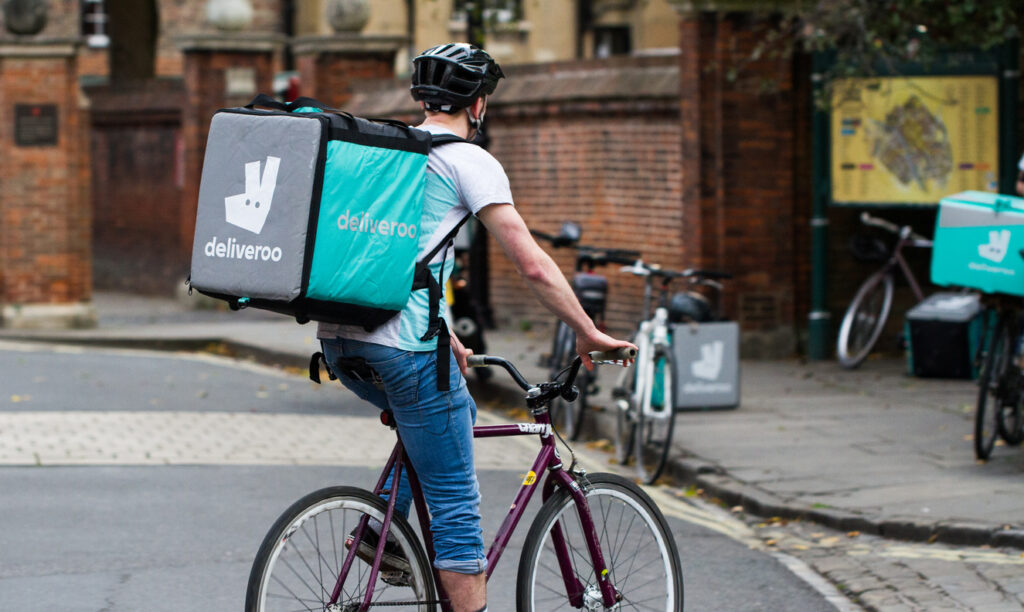As freelancing becomes more mainstream, the divide between classifying people as employed workers or self-employed is narrowing all the time. Across all sections of the economy and all professional levels, there are ‘gig’ workers everywhere, in public sector and commercial organisations of all sizes.
Gig economy companies should appreciate that many of their most significant customer interactions are being completed by people who are not actually employees in the traditional sense.
The gig economy more than doubled in size in the three years up to 2019, accounting for 4.6 million workers. In 2020, the onset of the Covid-19 pandemic significantly hit the industry, with almost 70% of gig workers saying they had no income in April this year, amid global lockdowns. Despite this, it’s been predicted that the ensuing economic downturn will boost the gig economy, as companies become wary of hiring permanent staff and rising unemployment leads to more people seeking this kind of work.
In 2018, a case involving one of the large courier companies (Hermes) highlighted that employment lawyers are starting to rule in favour of the worker when it comes to rights, in keeping with recommendations in Lord Taylor’s Good Work Plan. This has led to some companies also offering their gig economy workers enhanced contracts, with additional rights that would normally only be available to employed workers. These include holiday pay and guaranteed minimum wages. What’s interesting is that it has taken such a long time and a high court ruling to trigger a change.
Gig workers on the front line
Something that businesses are only now starting to appreciate is that the people who were potentially missing out on some of these ‘perks’ were very often those working most closely with the end customer. It’s a bit incongruous. When you order a takeaway from a company like Deliveroo, what is the most memorable aspect of the service? Clearly, it’s when your food turns up, duly delivered by a self-employed rider.
Gig economy companies should appreciate that many of their most significant customer interactions are being completed by people who are not actually employees in the traditional sense. It’s not the back office workers that are representing their brands. Even if only for a very short time, they have an impact and need developing. Regardless of who they are, if a representative of the company doesn’t have the right skill sets and attitude, it’s potentially doing the brand a big disservice.
Deliveroo clearly understands all this and offers all its delivery workers access to online learning. The vast majority of them are self-employed, but they have a huge impact on company culture and the fact that they are not on the payroll is pretty academic. They need to have the opportunity to learn new skills, improve their communications abilities and customer service capabilities. A company like Deliveroo cannot sustain its growth ambitions without the support of a multi-skilled and motivated workforce.
Portfolio careers and the effect on L&D
Going forward, as self-employed working and freelancing become increasingly ‘normal’ and more people have ‘portfolio careers’, this raises an important question for all L&D specialists.
Who should be responsible for learning and development? If training courses are only considered important for the officially employed, where does this leave everyone else?
Is it feasible to have a two-tier workforce? Where does it leave learning and development in the future as an organisational function?
L&D is evolving very fast as a function and now increasingly placing the control and impetus for learning in the hands of workers themselves, who are becoming self-directed learners. They are motivated very differently and it’s rather like ‘gig’ working. Many people prefer to freelance or stay self-employed rather than have a ‘regular job’, because of the flexibility and freedom it offers them to pursue other interests.
The same ‘self-employed’ logic applies to self-directed learning. Based on the premise that all learning is good, they want the freedom to access resources that allow them to study what interests them and what they believe will be most beneficial.
Self-directed and micro-learning
Research completed by one of our automotive customers internally verified this. It showed that all the company’s employees were very interested in being developed personally and professionally. In particular, those who worked remotely wanted more control over their own development and the opportunity to access learning resources from any location. The same applies to ‘gig’ workers.
Linked to the trend of workers wanting to retain flexibility and control is another emerging trend, for micro-learning. This makes total sense for gig workers, who earn by the hour. When time is money, spending hours at a time on learning and development isn’t feasible. Instead, quick glimpses in between jobs at bite-sized learning resources that are short, to the point and easy to access from phones, is the way forward.
If you want the best possible outcomes from your workers, whether they are employees or freelancers, it’s important to create a sense of equality and provide flexible, accessible learning opportunities.
Interested in this topic? Read What should business leaders change to thrive in the gig economy?
As freelancing becomes more mainstream, the divide between classifying people as employed workers or self-employed is narrowing all the time. Across all sections of the economy and all professional levels, there are ‘gig’ workers everywhere, in public sector and commercial organisations of all sizes.
Gig economy companies should appreciate that many of their most significant customer interactions are being completed by people who are not actually employees in the traditional sense.
The gig economy more than doubled in size in the three years up to 2019, accounting for 4.6 million workers. In 2020, the onset of the Covid-19 pandemic significantly hit the industry, with almost 70% of gig workers saying they had no income in April this year, amid global lockdowns. Despite this, it’s been predicted that the ensuing economic downturn will boost the gig economy, as companies become wary of hiring permanent staff and rising unemployment leads to more people seeking this kind of work.
In 2018, a case involving one of the large courier companies (Hermes) highlighted that employment lawyers are starting to rule in favour of the worker when it comes to rights, in keeping with recommendations in Lord Taylor’s Good Work Plan. This has led to some companies also offering their gig economy workers enhanced contracts, with additional rights that would normally only be available to employed workers. These include holiday pay and guaranteed minimum wages. What’s interesting is that it has taken such a long time and a high court ruling to trigger a change.
Gig workers on the front line
Something that businesses are only now starting to appreciate is that the people who were potentially missing out on some of these ‘perks’ were very often those working most closely with the end customer. It’s a bit incongruous. When you order a takeaway from a company like Deliveroo, what is the most memorable aspect of the service? Clearly, it’s when your food turns up, duly delivered by a self-employed rider.
Gig economy companies should appreciate that many of their most significant customer interactions are being completed by people who are not actually employees in the traditional sense. It’s not the back office workers that are representing their brands. Even if only for a very short time, they have an impact and need developing. Regardless of who they are, if a representative of the company doesn’t have the right skill sets and attitude, it’s potentially doing the brand a big disservice.
Deliveroo clearly understands all this and offers all its delivery workers access to online learning. The vast majority of them are self-employed, but they have a huge impact on company culture and the fact that they are not on the payroll is pretty academic. They need to have the opportunity to learn new skills, improve their communications abilities and customer service capabilities. A company like Deliveroo cannot sustain its growth ambitions without the support of a multi-skilled and motivated workforce.
Portfolio careers and the effect on L&D
Going forward, as self-employed working and freelancing become increasingly ‘normal’ and more people have ‘portfolio careers’, this raises an important question for all L&D specialists.
Who should be responsible for learning and development? If training courses are only considered important for the officially employed, where does this leave everyone else?
Is it feasible to have a two-tier workforce? Where does it leave learning and development in the future as an organisational function?
L&D is evolving very fast as a function and now increasingly placing the control and impetus for learning in the hands of workers themselves, who are becoming self-directed learners. They are motivated very differently and it’s rather like ‘gig’ working. Many people prefer to freelance or stay self-employed rather than have a ‘regular job’, because of the flexibility and freedom it offers them to pursue other interests.
The same ‘self-employed’ logic applies to self-directed learning. Based on the premise that all learning is good, they want the freedom to access resources that allow them to study what interests them and what they believe will be most beneficial.
Self-directed and micro-learning
Research completed by one of our automotive customers internally verified this. It showed that all the company’s employees were very interested in being developed personally and professionally. In particular, those who worked remotely wanted more control over their own development and the opportunity to access learning resources from any location. The same applies to ‘gig’ workers.
Linked to the trend of workers wanting to retain flexibility and control is another emerging trend, for micro-learning. This makes total sense for gig workers, who earn by the hour. When time is money, spending hours at a time on learning and development isn’t feasible. Instead, quick glimpses in between jobs at bite-sized learning resources that are short, to the point and easy to access from phones, is the way forward.
If you want the best possible outcomes from your workers, whether they are employees or freelancers, it’s important to create a sense of equality and provide flexible, accessible learning opportunities.
Interested in this topic? Read What should business leaders change to thrive in the gig economy?








